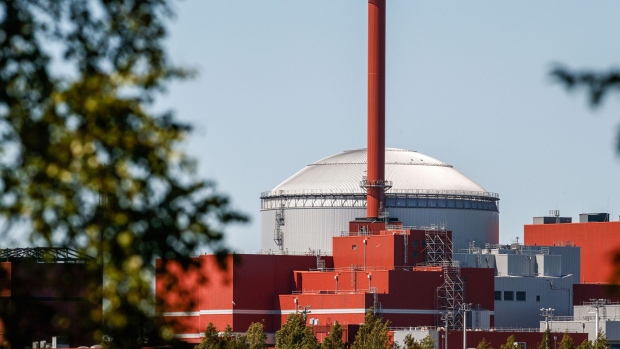Oct 19, 2022
Finland Sees Delay to New Nuclear Reactor as Blackouts Loom
, Bloomberg News

(Bloomberg) -- A new nuclear reactor in Finland is set to be delayed by about two weeks to the end of the year, exacerbating a potential power shortage that’s pushed authorities to warn that the Nordic country faces rolling blackouts.
The delay is due to damage found in the feedwater pumps located in the 1,600-megawatt Olkiluoto-3 unit’s turbine island during a testing phase, its operator Teollisuuden Voima Oyj said in a statement, adding that nuclear safety was not compromised. A new commissioning schedule posted later on Wednesday showed tests are slated to resume Nov. 13 and regular power production on Dec. 27.
“A possible delay in the commissioning of the plant would significantly reduce the adequacy of electricity in Finland,” Nordic and Baltic grid operators said in a joint winter power forecast by published on Wednesday.
The plant was set to provide vital electricity supplies to the Nordic nation after imports from Russia were cut completely in May. The Finnish grid has warned of rolling power cuts this winter as Europe faces its worst energy crisis in decades. When running, the three reactors at Olkiluoto produce 40% of Finland’s electricity.
Faced with soaring prices and the prospect of winter outages, Finnish households have already started saving electricity, with power use in September matching levels seen in June -- a much warmer and lighter month, according to industry estimates.
The reactor, which cost its operator roughly $6.4 billion, has been in testing since March and last month reached full capacity for the first time. When construction began in 2005, the unit was set to be the world’s largest, but was overtaken and is now the third most powerful globally.
“Imports from neighboring countries can only happen if there is both available transmission capacity and a production surplus in the exporting country, something that may be limited during periods of high demand in the region,” the grid companies said.
The blackouts are likeliest during cold spells, when demand rises across the region and the availability of imports comes under question, Fingrid has said. Demand may also overwhelm supply if windy weather occurs later than planned or a power plant unexpectedly drops off the grid.
The highest power consumption last winter occurred in early December while a year earlier demand peaked first in January and a number of times in February, according to data from network manager Fingrid Oyj.
(Updates with duration of delay from first paragraph)
©2022 Bloomberg L.P.





